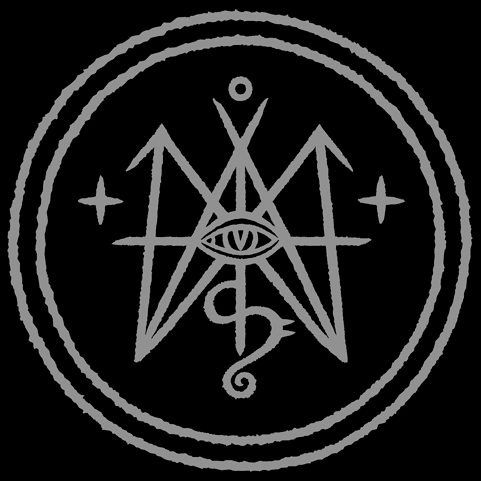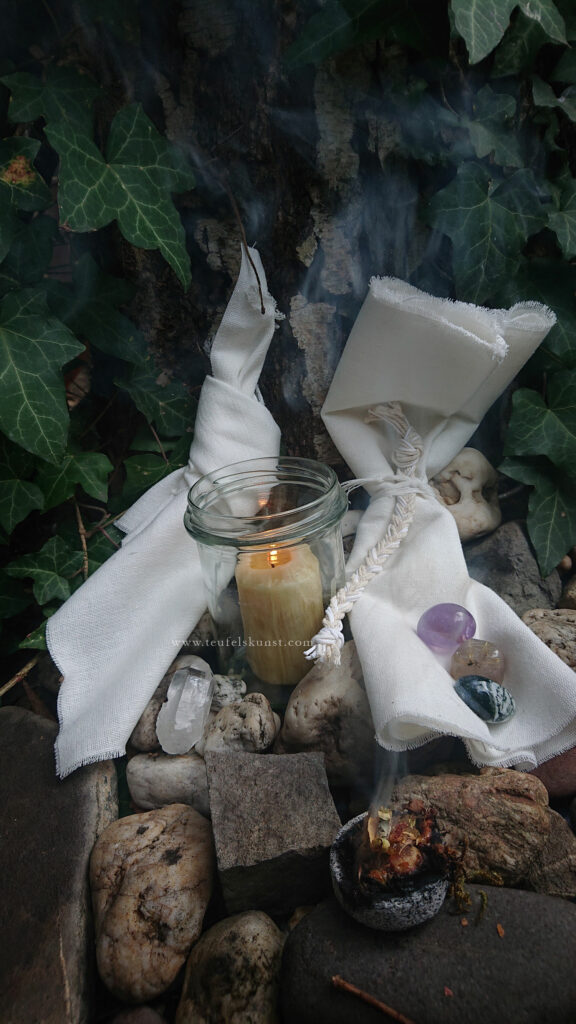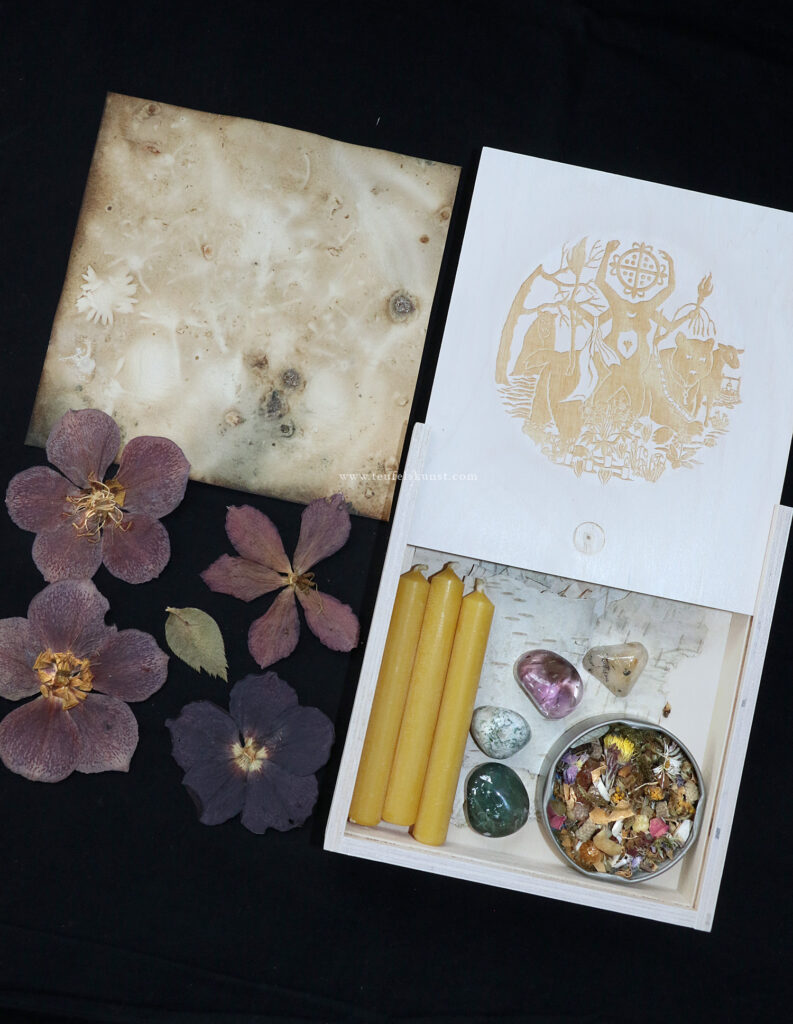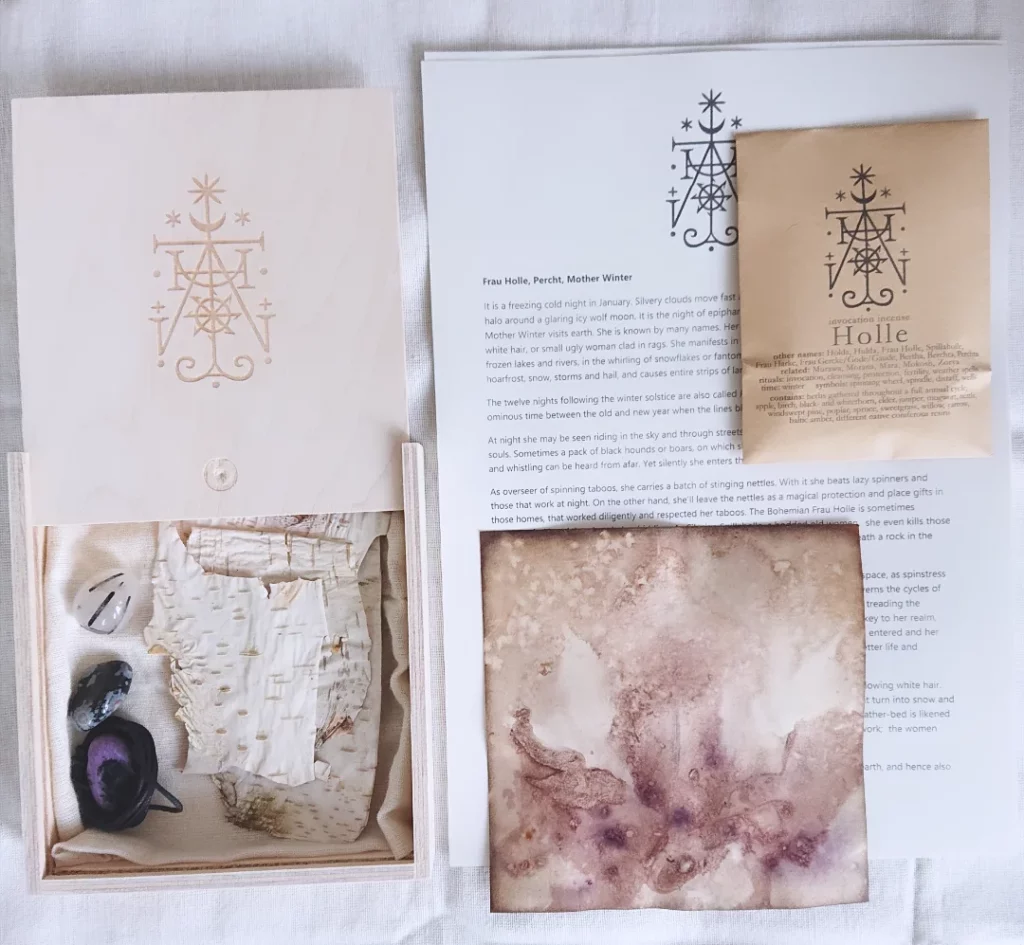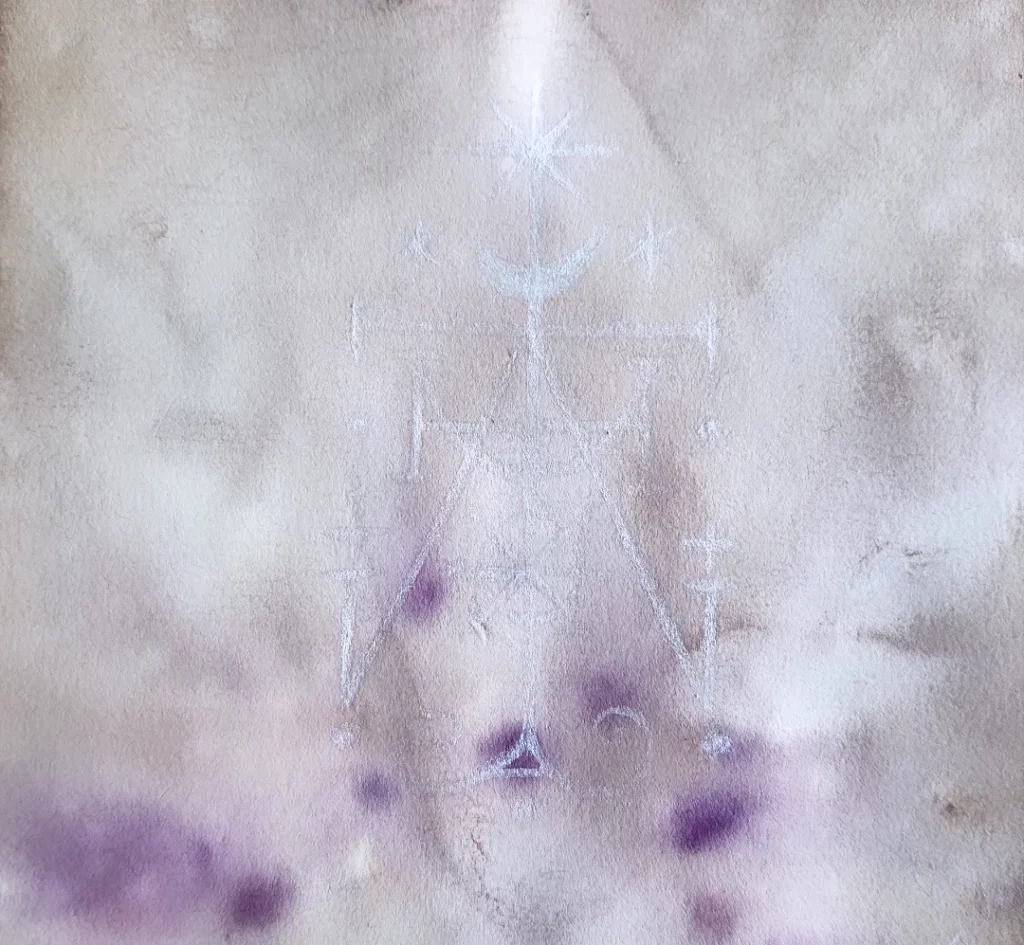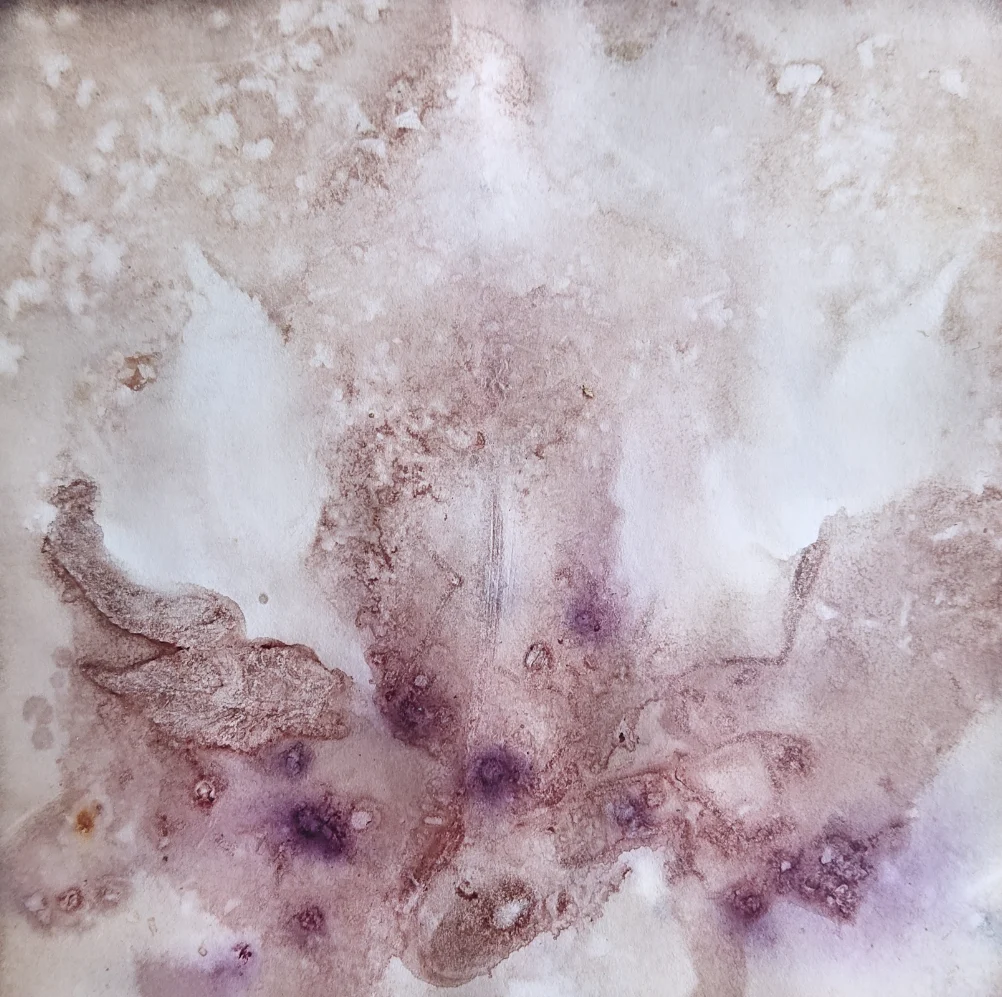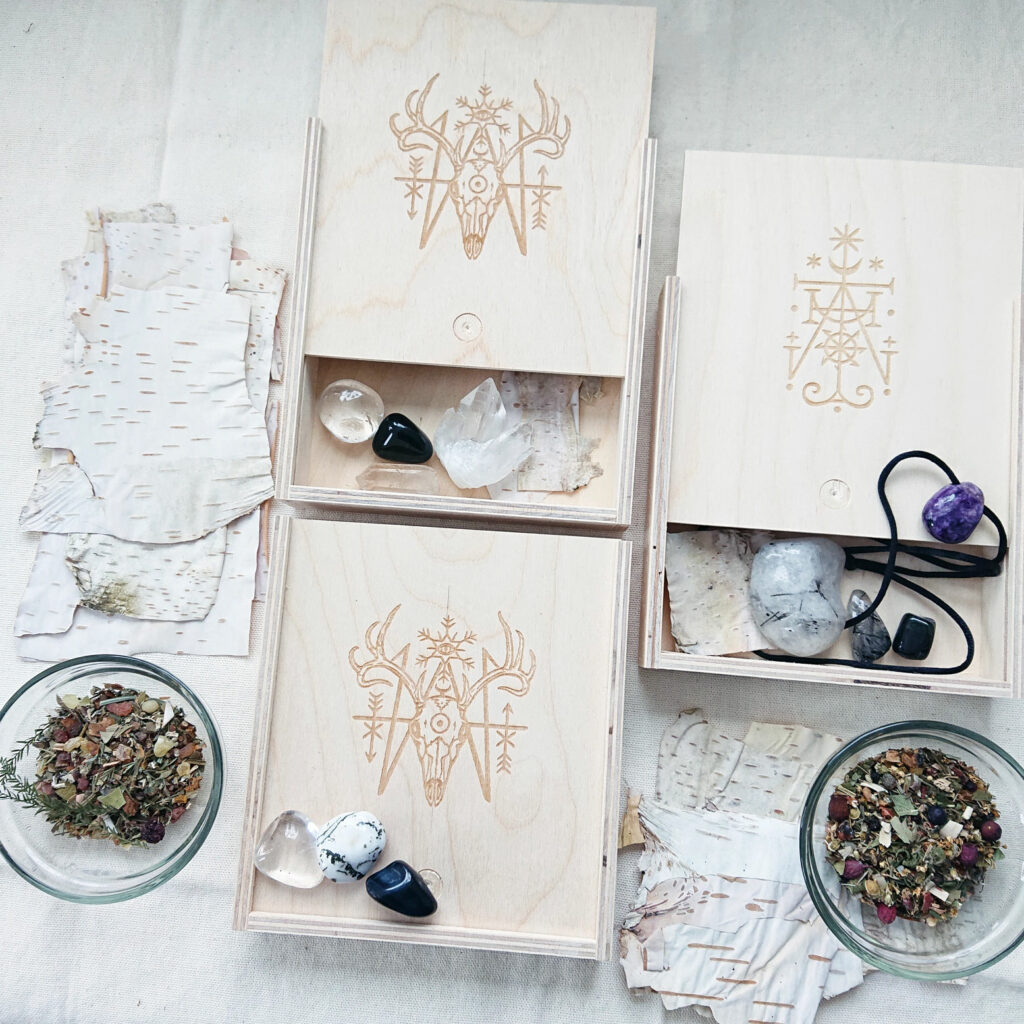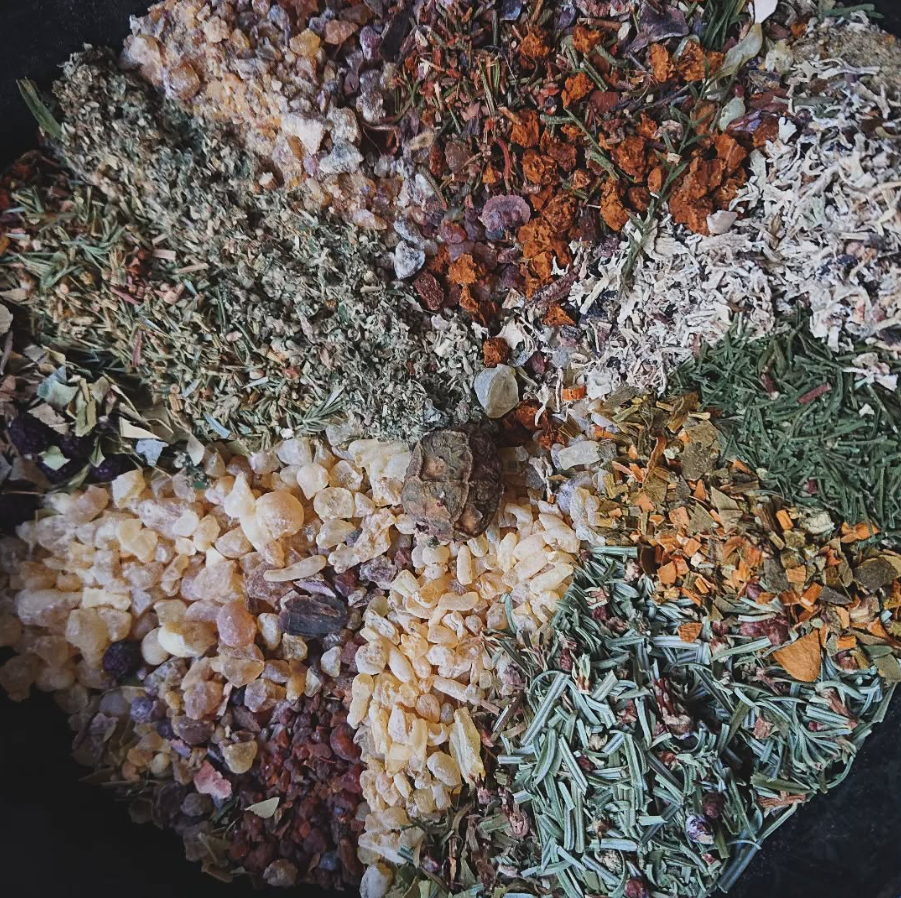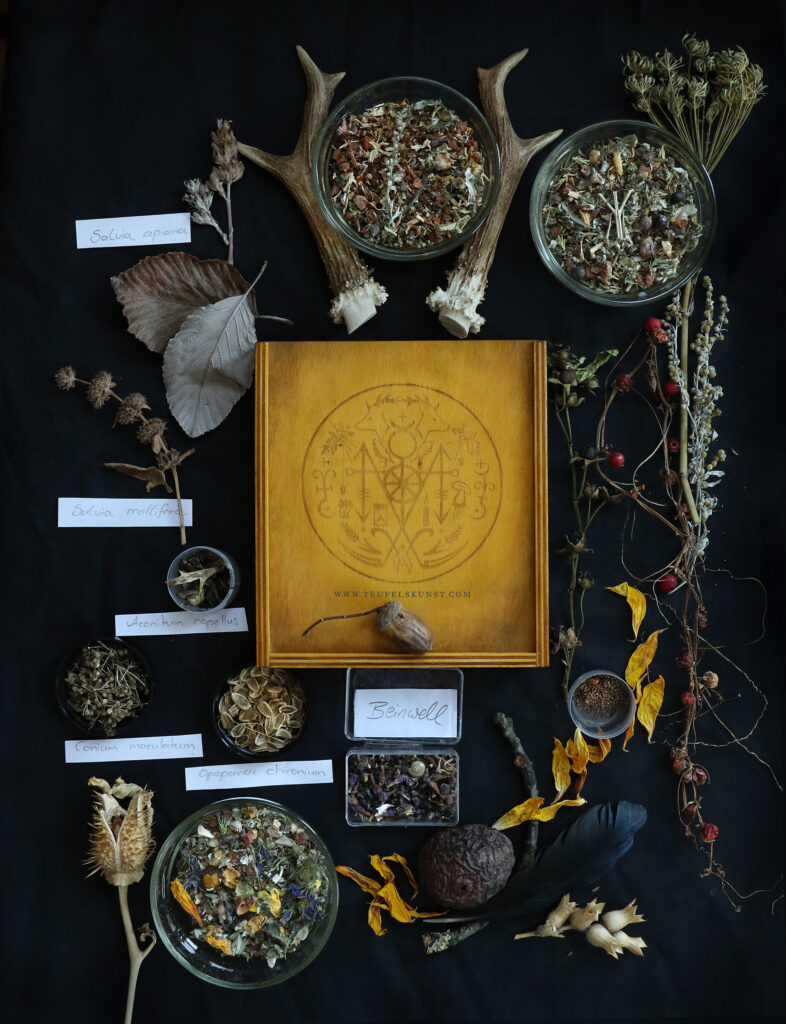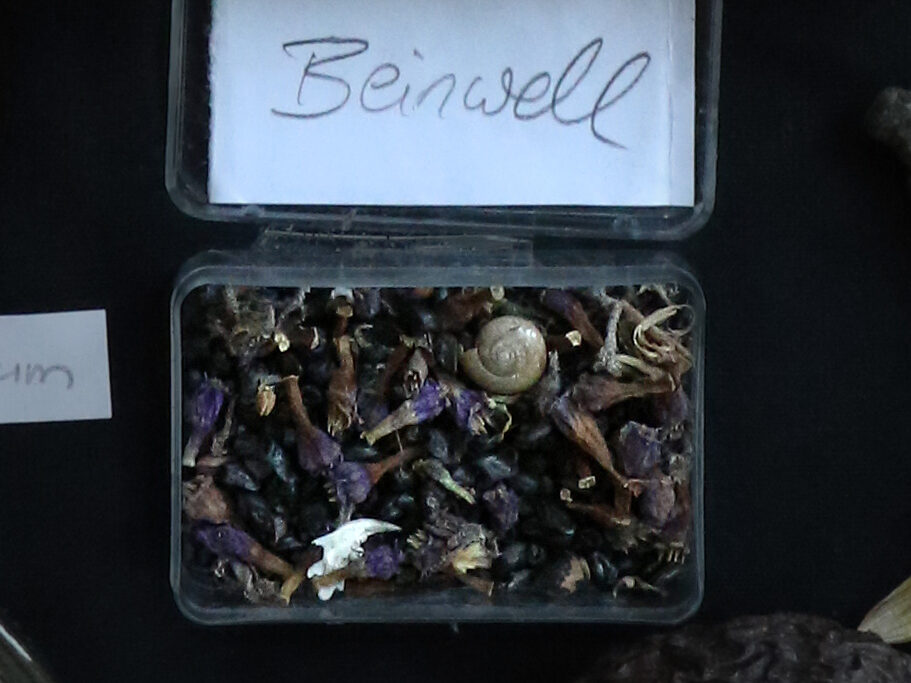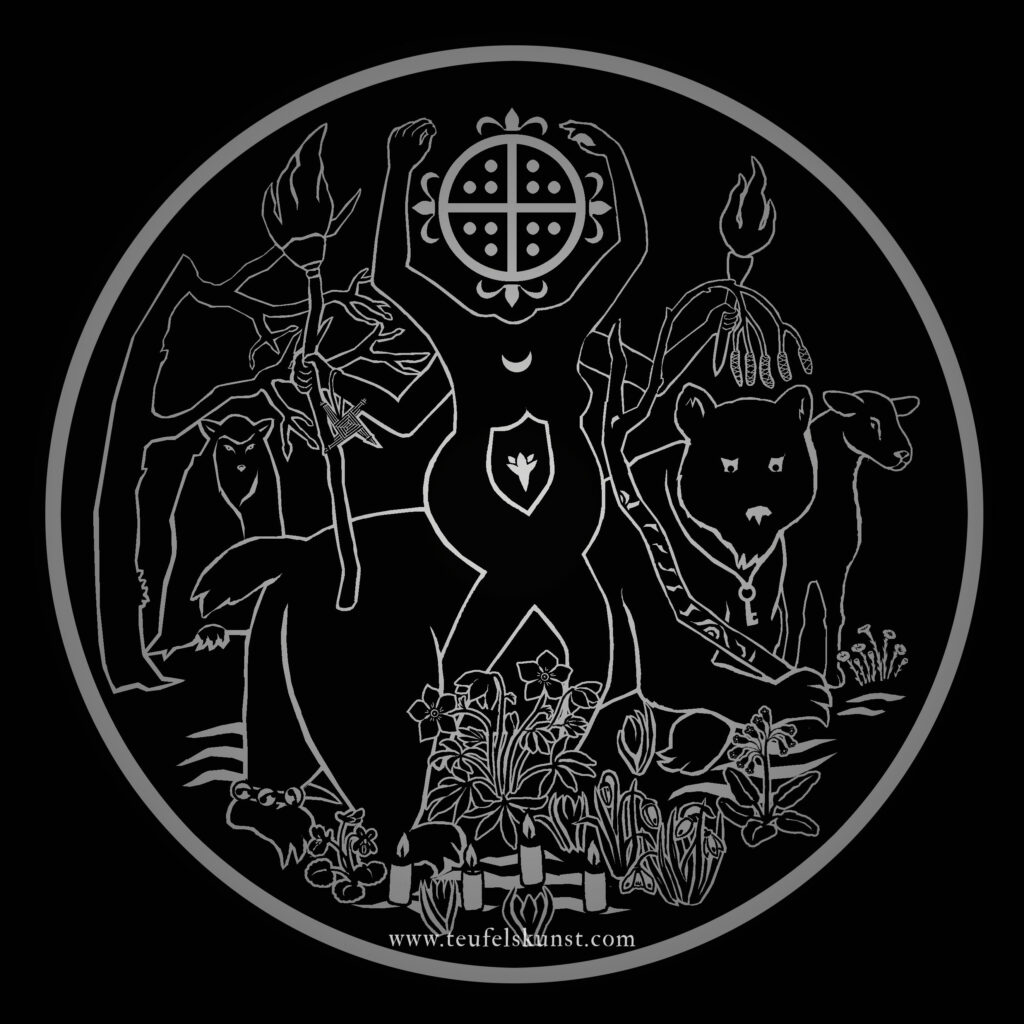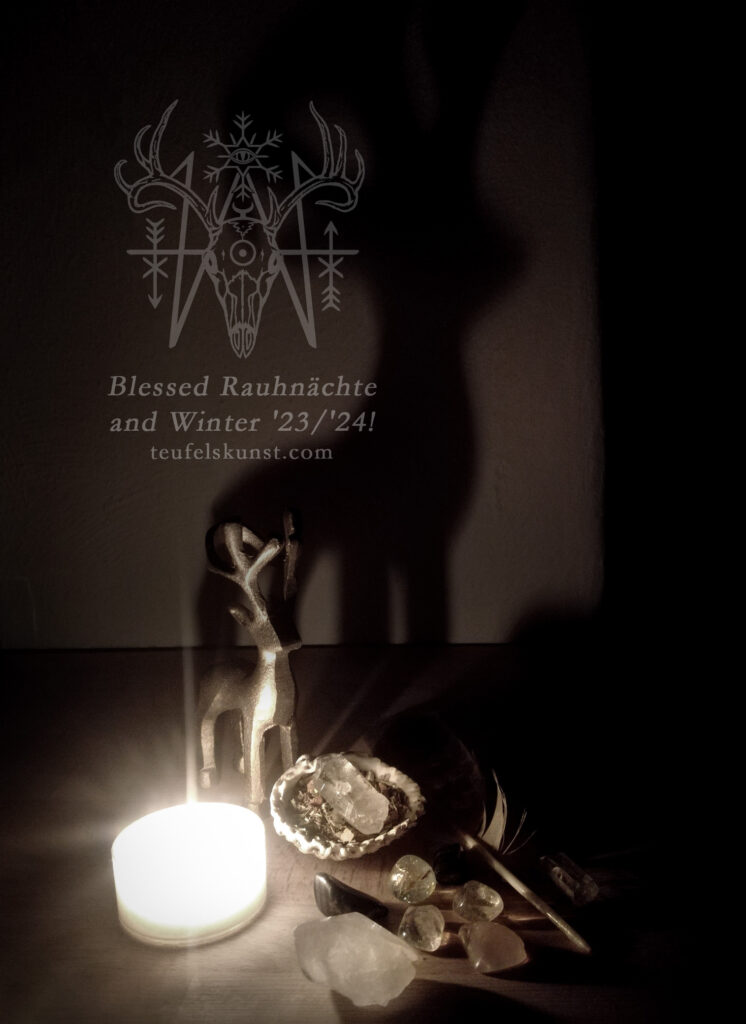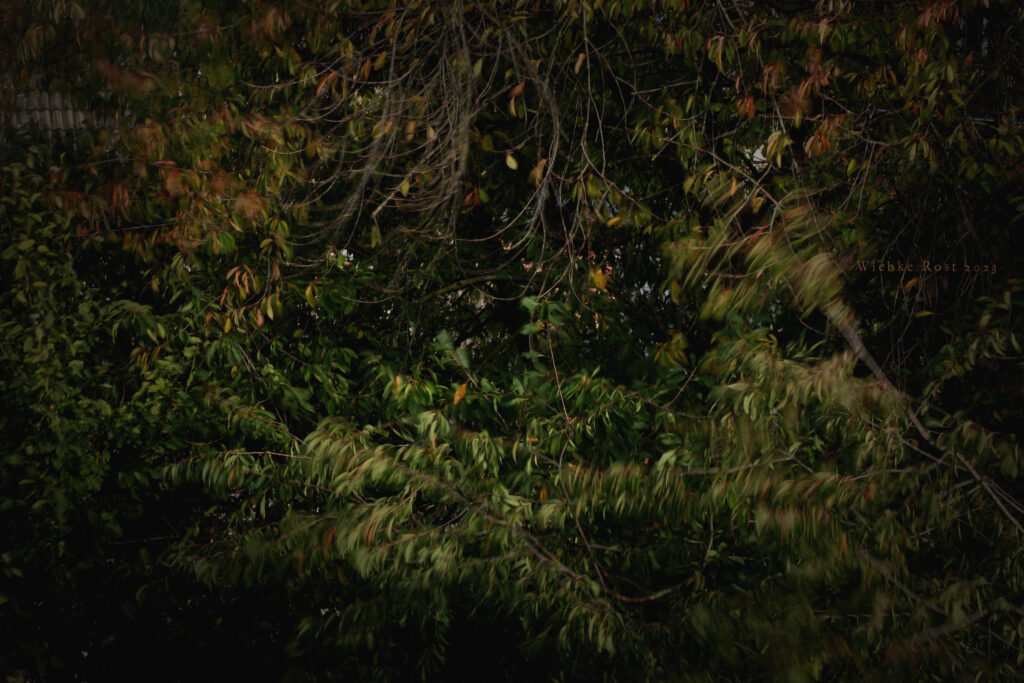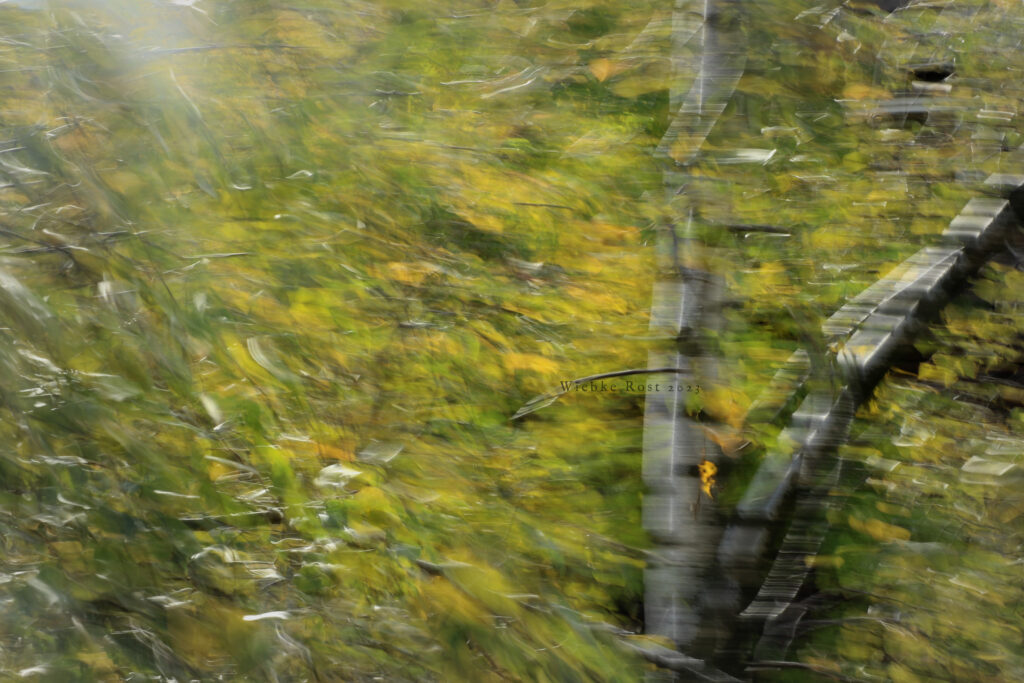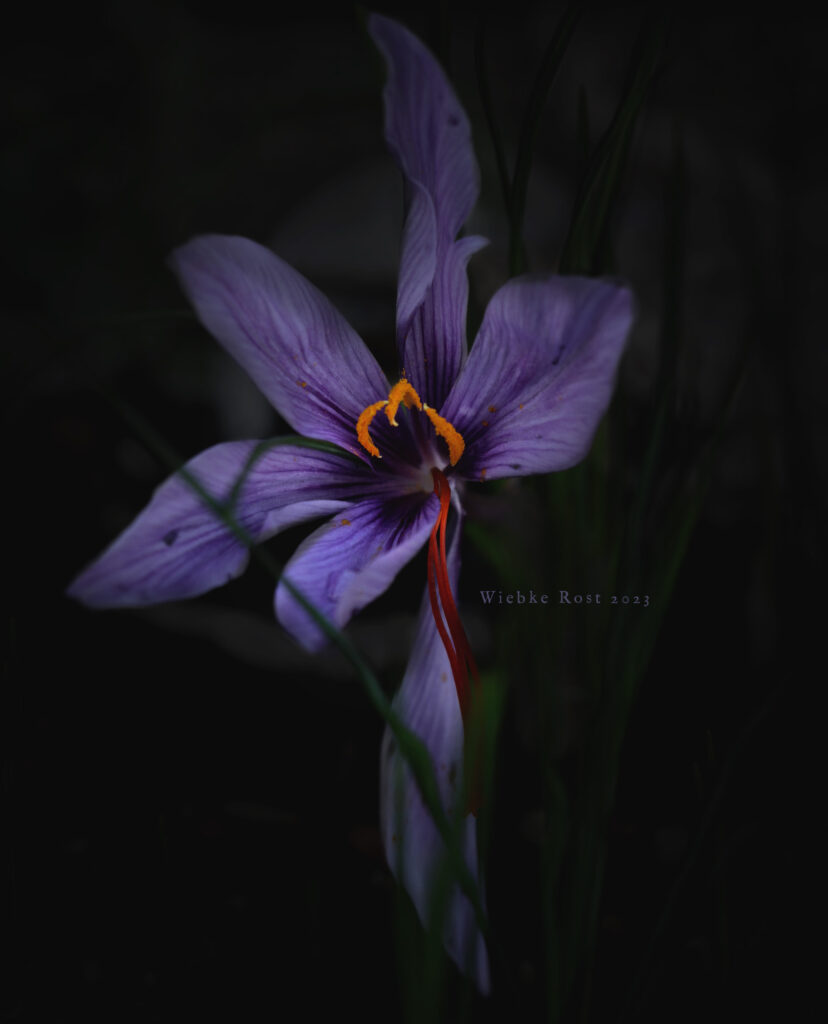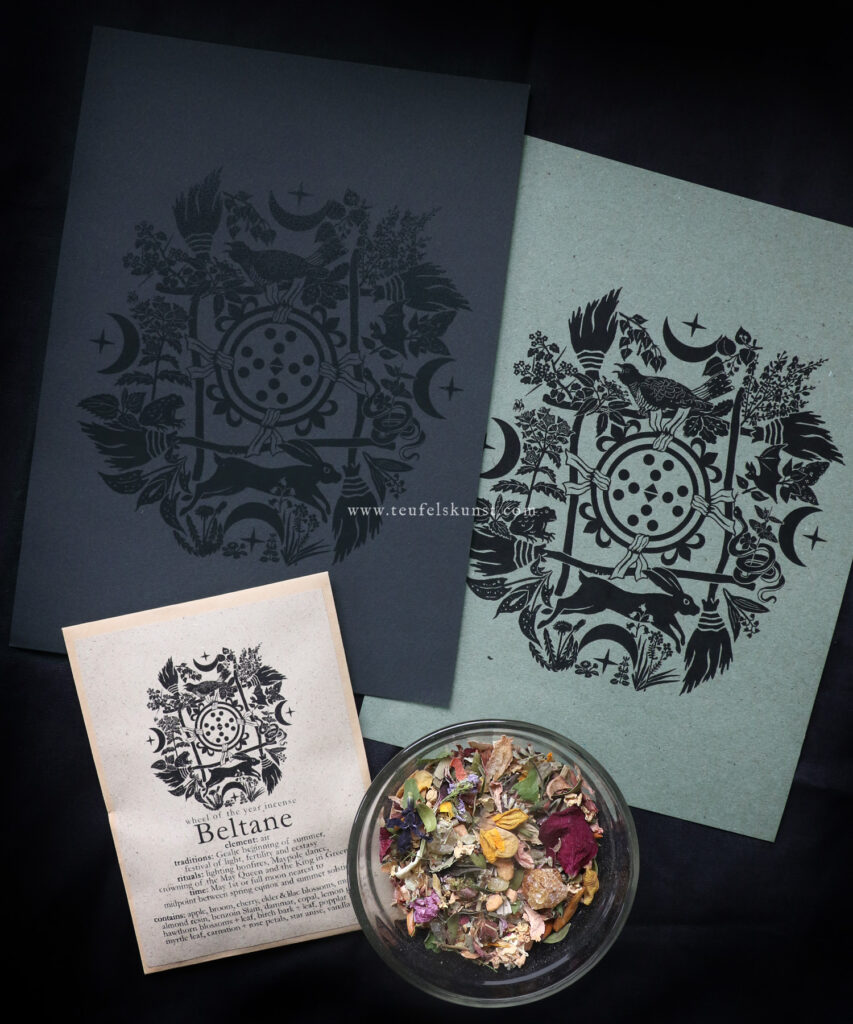
Several weeks were spent on this illustration and incense for the annual celebration of Beltane, exploring folkloric and mythical backgrounds of this important spring festival.
In European tradition it is the cuckoo that announces the arrival of spring. It is celebrated on the first day of May and often the evening preceding the celebration of light is filled with drinking and ecstatic dancing. It is also then that the maypole is installed.
This pole is at the center of the celebration. On top of it is seated the green wreath made of seasonal flowers, herbs and green tree branches. The pole itself is often a birch tree or spruce from a nearby forest. Around the wreath are tied colorful bands in white, green, yellow and red or showing local colors. The red may represent the blood of sacrifice – on such important festivals animals were sacrificed in the name of the gods and then consumed. The red could also stand for the blood of the virginal goddess of spring as she enters into union with the sun god Belenos (or Bel), the “bright one”. The pole and the wreath stand for a sacred marriage of Flora / Persephone and the sun god or the god of the wild. In their likeness the May queen, usually the fairest and most skillful of all the young women is elected together with her future spouse – the man that first climbs on top of the maypole. He then becomes the green man, as his body is painted green, his face blackened and wearing a mask of leaves. He also represents the Oak king (summer) that has defeated the holly king (winter).
Viewed from above, the circular shape of the wreath becomes the gate of the cauldron of the Cerridwen, inside of which is brewed the elixir that transforms the innocent boy Gwyon into the enlightened man Taliesen, the “bright one”, right on Beltane. Part of the brew are nettles and black henbane – perhaps the most important shamanic initiation herb of Europe. Noteworthy, it is only three drops that carry the magical essence – the rest of the brew is poisonous, and as Gwyon is shocked when accidentally spilling three drops on himself, he pours out the rest and poisons the surrounding rivers. Needless to say, Cerridwen is furious when she finds out about Gwyons mishap and chases him mercilessly. During a brutal transformative initiation marathon he turns in to a rabbit (earth), a fish (water), a bird (air) and finally into a wheat kernel = seed (fire). The Cerridwen turns into a black hen and swallows him. In her belly he is reborn as an utterly beautiful boy, who she cannot kill. She abandons him to the sea. Washed ashore he is found right on the first day of May and becomes Taliesen, the “bright one”.
The old Irish Beltaine is derived from common Celtic belo-te(p)niâ, meaning “bright fire”. Fire is often part of spring and May Day celebrations, e.g. for cleansing (burning) the old and making way for the new or as a simple reference to the return of the sun. The sun god was also known as Bel or Belenos.
Field flowers that carry the signature of the sun are the dandelion and daisy. They are often part of the flower crown worn by the May queen. Other flowers from which the wreath is made are ground ivy, which exposes the presence of any witches. The crown is often also made of hawthorn which blooms now or the fragrant (but poisonous) lily-of-the-valley.
The linden is another important tree in May day celebrations as it is often at the center of gatherings and dance. In some areas it is also costum to install green birch trees with a heartshaped sign on which the name of the adored girl is written as Maypoles infront of her home. It is then left to her to guess who the admirer is.
Entering the blue hour, the bats are out and the spirits of nature join the round dance, as the warm air is sweltry from the smell of blooming lilac, elder and broom. It is not hard to imagine how the dancers would transform into broom stick riding witches and their animal familiars. The Mayday customs were of course abhored by Christian church officials, who re-dedicated the feast day to Saint Walburga and renamed it into Walpurgisnacht and turned the sacred bonfires into pyres. But the celebrations continue unto this day and the nature spirits are there for who reaches out to them.
>>>
Included in this offer are 1 black on black and 1 black on green A5 print + “Beltane” + “Walpurgisnacht” incense blends. Limited edition of 12 copies. Shipping now!
April 24, 2025
Posted In: Prints, Art, Feast Days
Tags: art prints, walpurgisnacht, beltane, illustration, limited editions
